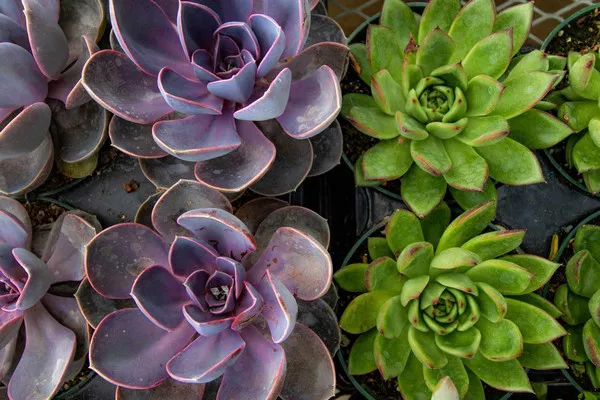Succulents, with their unique shapes and captivating forms, have earned a special place in the hearts of plant enthusiasts. These hardy plants are known for their ability to thrive in arid conditions and low-maintenance requirements. However, even the most resilient succulents can face challenges that might lead to their decline. Knowing when a succulent has reached the end of its lifecycle is crucial for maintaining a healthy and vibrant collection. In this article, we will explore the telltale signs that indicate a succulent is beyond revival and discuss related care practices to prevent such situations.
Understanding the Life Cycle of Succulents
Succulents, like all living organisms, go through a natural life cycle. This cycle includes periods of growth, dormancy, flowering, and, eventually, decline. While many succulents have long lifespans and can endure unfavorable conditions, they are not immune to issues that can cause them to deteriorate. Identifying these issues and understanding when a succulent is truly beyond saving is essential for responsible plant care.
1. Signs of a Struggling Succulent
Wilting and Shrinking
One of the first signs that a succulent is in trouble is wilting or shrinking of its leaves. Healthy succulents are characterized by plump, turgid leaves filled with water. If you notice your succulent’s leaves becoming limp, deflated, or shriveled, it could be a sign of dehydration or other underlying issues.
Discoloration
Unusual discoloration, such as yellowing, browning, or blackening of leaves, can signal a variety of problems, including overwatering, underwatering, nutrient deficiencies, or diseases. While some discoloration can be a result of natural aging or exposure to stressors, extensive and rapid changes in color can be cause for concern.
2. Root Rot and Stem Damage
Rotting and Mushiness
Root rot is a common issue that affects succulents when they are consistently exposed to excessive moisture. If you notice your succulent’s stems or base becoming mushy, darkened, or showing signs of decay, it’s likely suffering from root rot. Root rot can spread quickly and is often irreversible if not addressed promptly.
3. Lack of New Growth
Stagnation in Growth
Healthy succulents exhibit new growth in the form of fresh leaves, shoots, or offsets. If your succulent has stopped producing new growth or shows signs of stunted development, it may be struggling to obtain essential nutrients or experiencing environmental stressors that hinder its growth.
4. Pest Infestations
Damage and Pest Presence
Pest infestations, such as mealybugs, aphids, or scale insects, can wreak havoc on your succulent’s health. These pests feed on plant tissues and sap, weakening the succulent and making it vulnerable to diseases. If you observe the presence of pests, along with visible signs of damage like holes or sticky residue, your succulent may be facing a significant challenge.
Assessing the Viability of a Succulent
1. Resuscitation Efforts
Before declaring a succulent as dead, it’s worth attempting to revive it through careful intervention:
Pruning: Trim away damaged or rotted parts of the plant using clean and sterilized tools. This can prevent the spread of diseases and encourage healthy growth.
Repotting: If root rot is suspected, carefully remove the succulent from its pot, gently wash off the soil, and inspect the roots. Trim away any rotted or unhealthy roots, then replant the succulent in fresh, well-draining soil.
Adjusting Care: Review your succulent’s care routine, including sunlight exposure, watering frequency, and soil type. Adjust these factors to better match your succulent’s specific needs.
2. Recognizing Irreversible Damage
Despite your best efforts, there are instances when a succulent is beyond saving:
Complete Collapse: If the succulent has become mushy, rotted, or its stem has collapsed, it may be too late to revive it.
Pervasive Pest Infestations: If pests have infested the plant extensively and have caused severe damage, the succulent’s chances of survival may be slim.
No Signs of Life: If the succulent shows no signs of new growth, recovery, or response to changes in care over an extended period, it may be time to accept that it has reached the end of its life cycle.
Preventing Succulent Decline
While identifying and addressing issues promptly can save a succulent from irreversible damage, it’s always better to adopt preventative measures to ensure the long-term health of your plants:
1. Optimal Care Routine
Provide your succulents with the right amount of sunlight, well-draining soil, and appropriate watering practices. Research the specific care requirements of each succulent species in your collection.
2. Regular Inspection
Regularly inspect your succulents for signs of stress, pests, or diseases. Early detection and intervention can make a significant difference in preventing severe damage.
3. Proper Potting and Drainage
Use pots with drainage holes to prevent water from accumulating around the roots. Ensure the potting mix is well-draining to prevent root rot.
Conclusion
Succulents are beloved for their beauty, resilience, and distinctive features. Understanding the signs of a struggling succulent and knowing when a plant is beyond revival is essential for responsible plant care. By recognizing the symptoms of dehydration, root rot, lack of growth, or pest infestations, you can take timely actions to address issues and potentially save your succulent. However, in cases of extensive damage or irreversible decline, accepting the natural life cycle of your succulent is part of being a caring and responsible plant owner. Remember that prevention is the key to success in succulent care—maintaining optimal growing conditions and staying attentive to your plants’ needs will help you enjoy healthy, thriving succulents in your collection.


